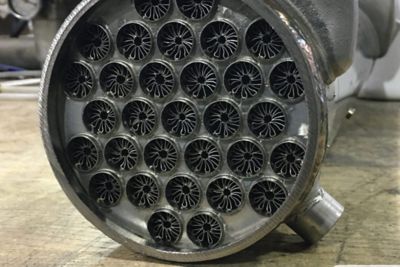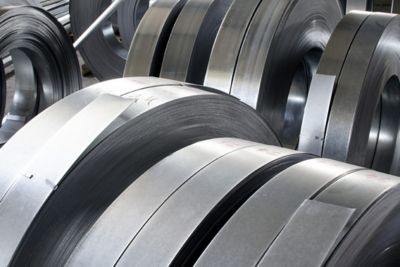Schnell-Spezifikationen
LS-DYNA bietet ein breites Spektrum an Analysen mit extrem schneller und effizienter Parallelisierung.
Ansys unterstützt die nächste Generation von Ingenieur*innen
Studenten erhalten kostenlosen Zugang zu erstklassiger Simulationssoftware.
Gestalten Sie Ihre Zukunft
Stellen Sie eine Verbindung mit Ansys her, um zu erfahren, wie Simulation Ihren nächsten Durchbruch vorantreiben kann.
Studenten erhalten kostenlosen Zugang zu erstklassiger Simulationssoftware.
Stellen Sie eine Verbindung mit Ansys her, um zu erfahren, wie Simulation Ihren nächsten Durchbruch vorantreiben kann.
Ansys LS-DYNA ist die branchenführende Software für explizite Simulationen, die für Anwendungen wie Falltests, Aufprall und Durchdringung, Zusammenstöße und Kollisionen, Insassensicherheit und vieles mehr verwendet wird.
Ansys LS-DYNA ist das weltweit am häufigsten verwendete explizite Simulationsprogramm, das in der Lage ist, die Reaktion von Materialien in kurzen Perioden starker Belastung zu simulieren. Seine vielen Elemente, Kontaktformulierungen, Materialmodelle und sonstige Steuerungsoptionen können zur Simulation komplexer Modelle mit Kontrolle über alle Details des Problems verwendet werden. ANSYS LS-DYNA-Anwendungen umfassen:
In diesem Video erhalten Sie eine Einführung in Ansys LS-DYNA – den skalierbarsten Multiphysik-Solver. LS-DYNA bietet Benutzer*innen schnelle und präzise Funktionen für die vorausschauende Entwicklung einer unendlichen Liste potenzieller Anwendungen.
LS-DYNA bietet ein breites Spektrum an Analysen mit extrem schneller und effizienter Parallelisierung.
Juli 2025
Mit Version 2025 R2 von Ansys LS-DYNA werden Werkstoffzuweisung, strukturierte S-ALE-Vernetzung und verbesserte Nachbearbeitung für Batterien und Elektromagnetik (EM) eingeführt.
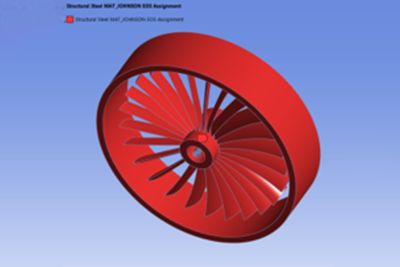
Weisen Sie Werkstoffe direkt Körpern in Ansys Mechanical zu, vermeiden Sie Doppelungen durch die automatische Wiederverwendung von Werkstoffkarten und optimieren Sie die Modelleinrichtung mithilfe von Kommandoobjekten. So wird Ihr Simulationsarbeitsablauf schneller, konsistenter und einfacher zu verwalten.

Erstellen Sie hochwertige strukturierte 2D- oder 3D-Netze mithilfe von Steuerpunkten, visualisieren Sie sie direkt in Mechanical und greifen Sie auf erweiterte Solver-Optionen zu, die die gesamte Bandbreite an Vernetzungsfunktionen in der Vorbearbeitung unterstützen und so für mehr Genauigkeit und Kontrolle sorgen.
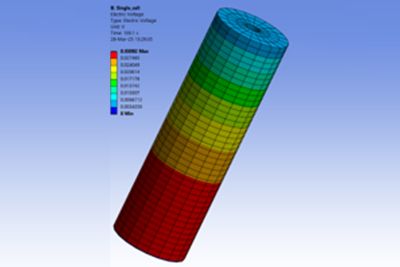
Die Nachbearbeitung wird nun sowohl für Batmac- als auch für Solid-Batteriemodelle unterstützt. Elektromagnetik-Ergebnisse und batteriespezifische Auslässe sind direkt in Mechanical als benutzerdefinierte Ergebnisse verfügbar, wodurch ein tieferes Verständnis und eine einfachere Visualisierung über die Tools "Lösung", "Ansehen" und "Arbeitsblatt" ermöglicht wird.
Lorem Ipsum has been the industry's standard dummy text ever since the 1500s, when an unknown printer took a galley of type and scrambled it to make a type specimen book. It has survived not only five centuries
Mithilfe von Simulationen können Ärzt*innen Größe und Lage von Gehirnbelastungen bestimmen und so die Behandlung von Gehirnerschütterungen verbessern.

Durch die Anwendung eines simulationsbasierten LS-DYNA-Workflows kann das Klinikteam den Beschleunigungswert eines Spielers ermitteln und diesen in Dehnungswerte über verschiedene Gehirnbereiche hinweg umwandeln.
Ärzt*innen sind sich nicht sicher, wie Schäden gemessen werden können, die durch Aufpralleffekte an Köpfen entstehen. Durch Magnetresonanztomographie (MRT), Computertomografie (CT) und Blutuntersuchungen diagnostizierte Gehirnerschütterungen liefern oft keine eindeutigen Ergebnisse.
Dr. Michael Power leitet die klinische Versorgung am Beaumont Hospital in Dublin, das sich auf die Behandlung von Kopfverletzungen spezialisiert hat – von denen viele bei Kontaktsportarten auftreten. Vor einigen Jahren schloss er sich mit CADFEM Ireland zusammen, dem Vertriebspartner von Ansys in Irland, um die Mechanismen von Gehirnerschütterungen zu erforschen und dabei technische Simulationen mit klinischem Fachwissen zu kombinieren. Ziel war es, zu verstehen, ob Simulationssoftware helfen könnte, die Ursachen von Gehirnerschütterungen zu definieren, ihre Zahl zu reduzieren und ihre Behandlung zu verbessern.
Lorem Ipsum has been the industry's standard dummy text ever since the 1500s, when an unknown printer took a galley of type and scrambled it to make a type specimen book. It has survived not only five centuries
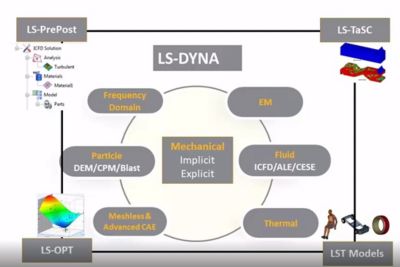
FUNKTIONEN VON LS-DYNA
Fachleute können Simulationen von Werkstofffehlern durchspielen und sich ansehen, wie sich der Fehler in einem Teil oder in einem System ausbreitet. Modelle mit einer großen Anzahl an Teilen oder Oberflächen, die miteinander interagieren, sind ebenfalls leicht zu bearbeiten, und Interaktionen sowie Lastübergänge zwischen komplexen Verhaltensweisen werden genau modelliert. Die Verwendung von Computern mit einer höheren Anzahl von CPU-Kernen kann die Lösungszeit drastisch reduzieren.
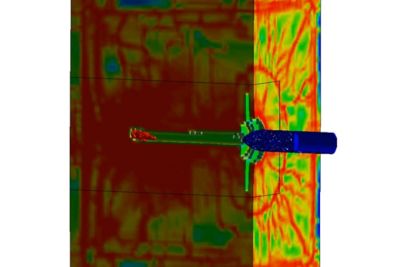
LS-DYNA-Elemente, Kontaktformulierungen, Materialmodelle und andere Steuerungen können zur Simulation komplexer Modelle mit Kontrolle über alle Details des Problems verwendet werden.
LS-DYNA RESSOURCEN

Besuchen Sie uns am 15. und 16. November in Novi, Michigan, USA, zu einem aufregenden zweitägigen Forum mit Keynotes, Dutzenden von Benutzerpräsentationen und Networking-Möglichkeiten mit Hunderten von erfahrenen LS-DYNA-Profis, um gemeinsam mit der Community bahnbrechende Innovationen zu beschleunigen.

Die europäische Konferenz LS-DYNA fand am 18. Und 19. Oktober 2023 in Baden-Baden statt. Mit rund 200 technischen Präsentationen, Top-Class-Keynote-Vorträgen, einer begleitenden Ausstellung und zahlreichen internationalen Teilnehmern aus Industrie und Wissenschaft ist die Konferenz die zentrale Veranstaltung rund um LS-DYNA in Europa.

In diesem Webinar geht es um das Verhalten von Batterien unter normalen Betriebsbedingungen und unter Missbrauchsbedingungen, und wie Batteriedesigns mit Ansys LS-DYNA optimiert werden.
Im November 2019 erwarb Ansys LSTC, die Autoren des expliziten Finite-Elemente-Codes LS-DYNA. Ansys LS-DYNA ist das am häufigsten verwendete explizite Simulationsprogramm, das in der Lage ist, die Reaktion von Materialien auf kurze Zeiträume starker Belastung zu simulieren.
In diesem Webinar wird die Verwendung von Ansys LS-DYNA zur Vorhersage der durch Züge verursachten Schwingungen anhand von Rad- und Schienenrauheitsmodellen vorgestellt.
Finden Sie heraus, wie die Kombination von Ansys LS-DYNA und Ansys optiSLang den steigenden Automatisierungsanforderungen durch die Verbindung leistungsstarker Solver gerecht wird und die Möglichkeit bietet, Daten für erweiterte Optimierungs- und Sensitivitätsuntersuchungen zuzuordnen und untereinander auszutauschen.
Erfahren Sie mehr über die einzigartigen Funktionen von LS-DYNA zur effizienten Modellierung von Aufprall- und Falltests.
In diesem Webinar wird das BatMac-Modell zusammen mit dem Testaufbau und der Modellentwicklung vorgestellt. Darüber hinaus werden Funktionen, Einschränkungen und zukünftige Verbesserungen der Batteriesicherheitsmodelle besprochen.
Für Ansys ist es wichtig, dass alle Menschen, auch solche mit Einschränkungen, Zugang zu unseren Produkten haben. Daher bemühen wir uns, die Zugänglichkeitsanforderungen auf der Grundlage des US Access Board (Section 508), der Web Content Accessibility Guidelines (WCAG) und des aktuellen Formats des Voluntary Product Accessibility Template (VPAT®) zu erfüllen.
Wenn Sie mit technischen Herausforderungen konfrontiert sind, ist unser Team für Sie da. Mit unserer langjährigen Erfahrung und unserem Engagement für Innovation laden wir Sie ein, sich an uns zu wenden. Lassen Sie uns zusammenarbeiten, um Ihre technischen Hindernisse in Chancen für Wachstum und Erfolg zu verwandeln. Kontaktieren Sie uns noch heute, um das Gespräch zu beginnen.


